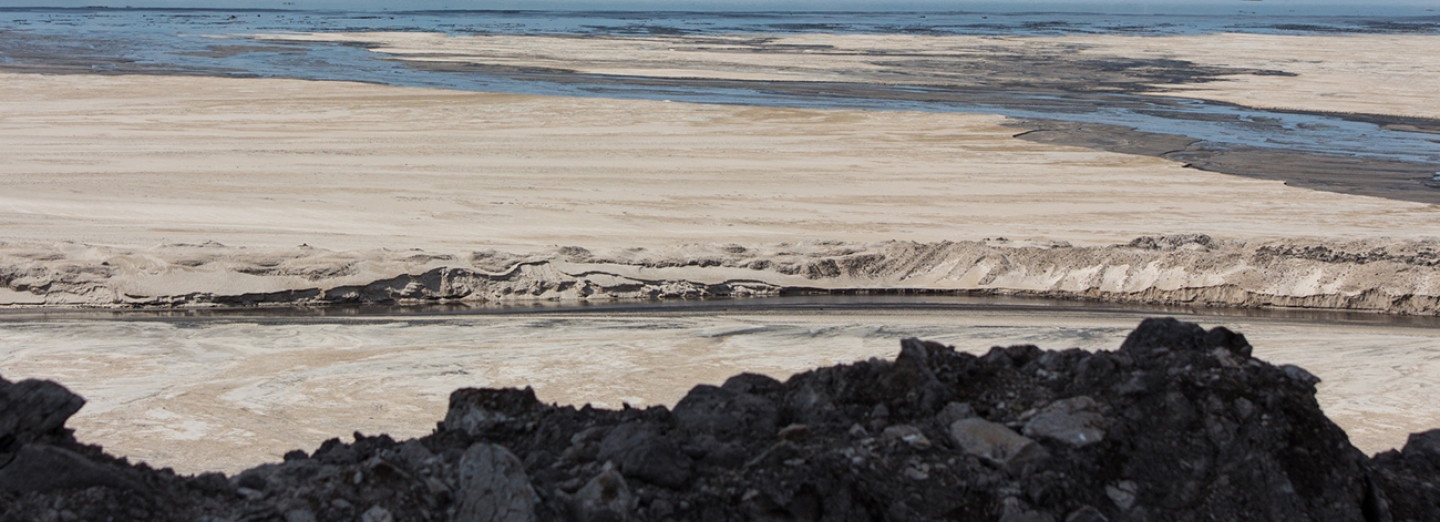Oil sands mine development, and the tailings that result from it, have a progressive history in Alberta. We continue to work with industry, other stakeholders, and Albertans to find innovative ways to reduce tailings growth.
Here are some key events and publications over the last 30 years that have promoted innovation in tailings management—and still do.
Timeline
Click on an event (right-hand column) to find reveal details on what happened.
- 1967
 Great Canadian Oil Sands (now Suncor) started construction of the first oil sand tailings pond (pond 1).
Great Canadian Oil Sands (now Suncor) started construction of the first oil sand tailings pond (pond 1). - 1974
Premier Peter Lougheed initiated Alberta Oil Sands Technology and Research Authority as a Crown corporation.
- 1989
 The Fine Tailings Fundamental Consortium is established to provide scientific understanding of fine tailings. The Government of Alberta and industry get together to share information on fluid tailings and the technologies to treat and reclaim them.
The Fine Tailings Fundamental Consortium is established to provide scientific understanding of fine tailings. The Government of Alberta and industry get together to share information on fluid tailings and the technologies to treat and reclaim them. - 1995
 A comprehensive report reviewing oil sands tailings science and treatment technologies—Advances in Oil Sands Tailings Research —is published by the Government of Alberta.
A comprehensive report reviewing oil sands tailings science and treatment technologies—Advances in Oil Sands Tailings Research —is published by the Government of Alberta.The report is a culmination of six years of research by the oil sands industry and the Government of Alberta. It identifies the technology of adding gypsum to tailings sand and mature fine tailings to change the mature fine tailings from a fluid to a solid. The resulting “clumps” make it easier to separate clay from the water.
- 1996
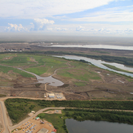 Suncor begins using the technology identified in Advances in Oil Sands Tailings Research and successfully separates water and clay on a large scale.
Suncor begins using the technology identified in Advances in Oil Sands Tailings Research and successfully separates water and clay on a large scale.Image Credit: Pond 1, photo courtesy of Suncor Energy Inc.
- 2000
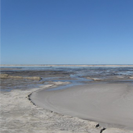 Syncrude starts using the same technology identified in Advances in Oil Sands Tailings Research and experiences similar success in separating clay and water.
Syncrude starts using the same technology identified in Advances in Oil Sands Tailings Research and experiences similar success in separating clay and water. - 2009
 This (former) AER directive set out new requirements for the regulation of tailings operations associated with mineable oil sands. The directive specified performance criteria for the reduction of fluid tailings.
This (former) AER directive set out new requirements for the regulation of tailings operations associated with mineable oil sands. The directive specified performance criteria for the reduction of fluid tailings. - 2010
 Suncor applies a technology known as thin-lift evaporative drying, which was developed through laboratory research and field testing, on a large scale. By adding polymer to tailings, the fine solids and clay particles form together. The mixture is spread across a shallow pond and, once the clumps settle, most of the water can be recycled. Any remaining water evaporates within 21 days.
Suncor applies a technology known as thin-lift evaporative drying, which was developed through laboratory research and field testing, on a large scale. By adding polymer to tailings, the fine solids and clay particles form together. The mixture is spread across a shallow pond and, once the clumps settle, most of the water can be recycled. Any remaining water evaporates within 21 days. Image Credit: Courtesy of Shell Canada Limited
 Suncor reclaims its first tailings pond at Wapisiw Lookout. Mature fine tailings were removed over ten years. The pond was filled in with tailings sands and capped with reclamation material, and then trees and grasses were planted on top.
Suncor reclaims its first tailings pond at Wapisiw Lookout. Mature fine tailings were removed over ten years. The pond was filled in with tailings sands and capped with reclamation material, and then trees and grasses were planted on top.Image Credit: Wapisiw Lookout photo courtesy of Suncor Energy Inc.
Shell tests a type of thin-lift evaporative drying technology at its Muskeg River Mine site.
- 2012
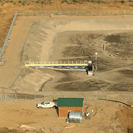 Syncrude tests a new technology, polymer flocculation. This process aims to remove water from mature fine tailings in a deep pit. A polymer is added to bring the fine solids and clay particles together in clumps. Water is removed through a central sump and a ditch is dug around the pit.
Syncrude tests a new technology, polymer flocculation. This process aims to remove water from mature fine tailings in a deep pit. A polymer is added to bring the fine solids and clay particles together in clumps. Water is removed through a central sump and a ditch is dug around the pit.Image Credit: Courtesy of Syncrude Canada Limited
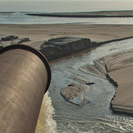 Syncrude tests large-capacity centrifuges to remove water from a polymer and tailings mixture. The dewatered product is trucked to a shallow containment area where it is spread about a metre thick. The remaining water then evaporates.
Syncrude tests large-capacity centrifuges to remove water from a polymer and tailings mixture. The dewatered product is trucked to a shallow containment area where it is spread about a metre thick. The remaining water then evaporates.Image Credit: Courtesy of Shell Canada Limited
About 200 million cubic metres of mature fine tailings are placed in a mined-out pit in Syncrude's base mine area and topped with 5 metres of water to determine whether the lake could reach a reclamation state by natural processes and eventually be connected to the surface water system.
- 2013
Alberta Energy Regulator is created with full energy regulatory functions for all enactments related to public lands, water, and the environment for all energy-related developments previously held by Alberta Environment and Protected Areas (formerly Alberta Environment and Sustainable Resource Development).
The report is a culmination of six years of research by the oil sands industry and the Government of Alberta. It identifies the technology of adding gypsum to tailings sand and mature fine tailings to change the mature fine tailings from a fluid to a solid. The resulting “clumps” make it easier to separate clay from the water.
- 2014
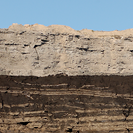 Mature fine tailings are mixed with dry overburden rich in clay to absorb the water. Overburden is the material removed from above an oil sands formation and is typically 50 metres thick.
Mature fine tailings are mixed with dry overburden rich in clay to absorb the water. Overburden is the material removed from above an oil sands formation and is typically 50 metres thick. - 2015
Canadian Natural Resources Ltd. and Imperial Oil start building commercial thickeners. Thickeners are being used commercially for water removal from fluid tailings in other mining operations worldwide.
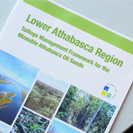 The Government of Alberta’s new Tailings Management Framework provides direction to the AER and industry on how to manage fluid tailings volumes. It represents an evolution in how industry, the regulator, and the government manage fluid tailings accumulation and risk. It promotes technological innovation, understanding, and certainty around tailings treatment options to ensure fluid tailings volumes are managed into the future.
The Government of Alberta’s new Tailings Management Framework provides direction to the AER and industry on how to manage fluid tailings volumes. It represents an evolution in how industry, the regulator, and the government manage fluid tailings accumulation and risk. It promotes technological innovation, understanding, and certainty around tailings treatment options to ensure fluid tailings volumes are managed into the future.The first State of Fluid Tailings Management for Mineable Oil Sands report published.
- 2016
The new tailings directive uses the overall volume of fluid tailings to track reduction. The new requirements are an evolution in how industry, the AER, and government will manage tailings. It tackles existing fluid tailings and new fluid tailings growth. Learn more about Directive 085.
- 2017
The tailings directive is updated as part of a phased-approach to clarify the AER’s requirements to manage fluid tailings through performance reporting and enforcement. The AER also begins making decisions on tailings management plans under Directive 085.
- 2019
All eight oil sands operators have approved tailings management plans (TMPs) in place. See the Tailings Notices and Decisions webpage.


